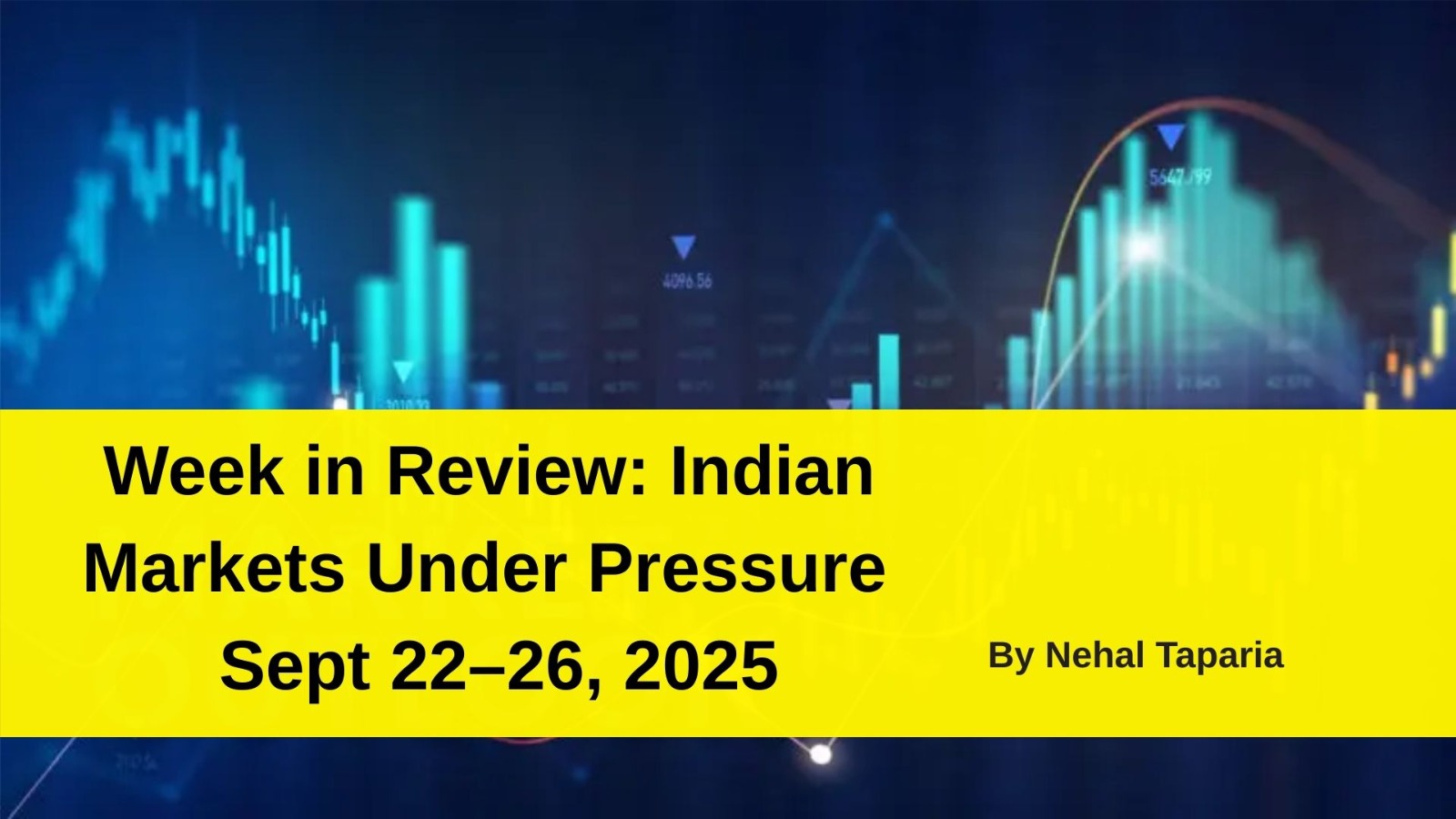Week in Review: Indian Markets Under Pressure — Sept 22–26, 2025

Week in Review: Indian Markets Under Pressure — Sept 22–26, 2025
Opening Thoughts
It was a bruising week for Indian equity markets. From bullish undertones just days ago, we shifted into risk mode. The confluence of international policy shocks, a sharp rethinking of pharma trade risk, and sustained foreign capital outflows eroded investor confidence. For market participants — retail, institutional, or policy watchers — this week underscored how vulnerable even large indexes can be when macro news hits.
Key Storylines
- Tariff Shock to Pharma
Perhaps the biggest headline came mid‐week: a 100% tariff on Indian branded drugs by the U.S. This rattled pharma names across boardrooms and trader desks. The sector, which had been a pillar of exports, now faces revenue and margin uncertainty. The knock-on effect extended to index heavyweights, dragging broader markets lower.
- Let’s Talk IT & Visa Risk
Indian IT firms—notably those heavily dependent on U.S. clients—reacted nervously to hints of tighter visa rules, fee hikes, and slower spending. When your client geography is under threat, investor reflex is to price in risk.
- Foreign Investors Yielding to Caution
FIIs have been sellers this week, applying pressure on equities and eroding liquidity. In contrast, domestic institutions have tried to step in, but their purchases were overwhelmed.
- Technical Lines are Being Crossed
Key supports for Nifty and Sensex were tested, if not breached. Resistance levels are now sharply defined, and investors will closely watch how the market behaves around them next week.
- Sentiment & Volatility Spike
With risk aversion back in the driver’s seat, volatility is no longer a backdrop — it’s center stage. Option premiums, VIX readings, and futures pricing all show markets are bracing for more swings.
What Could Unfold Next Week?
- Bounce attempts may emerge, especially if global cues (U.S., Europe) turn favorable or if India rolls out supportive policy responses.
- But further leg down cannot be ruled out if macro pressures intensify (more tariffs, capital flight, slowing earnings outlooks).
- A key pivot will be whether Nifty can reclaim and sustain above 25,365–25,400. Failure to do so may open the door to deeper declines.
- Sector rotation could happen: defensive sectors (FMCG, utilities) or domestic‐oriented plays may outperform riskier exports/tech names.
What Investors Should Watch Closely
- Foreign flows (FII / DII) day by day
- Pharma policies / trade negotiations and how India responds
- IT / global demand outlook & visa / regulatory reforms
- Rupee movement — weakness may exacerbate inflation/import cost fears
- Earnings guidance for major companies, especially exporters
- Support levels (both technical and psychological) around 24,700–25,000 zones
Final Word
This week was a sobering reminder: momentum can turn quickly when policy or global shocks hit. The resilience of the Indian market is being tested. For now, a defensive posture with calibrated entry into beaten down names may be prudent, rather than chasing speculative upside.
By Nehal Taparia
This content is for educational and knowledge purposes only and should not be considered as investment or Trading advice. Please consult a certified financial advisor before making any investment or Trading decisions.
Our Recent FAQS
Frequently Asked Question &
Answers Here
Q1. Why did markets fall so sharply this week?
A mix of adverse global cues (tariffs, U.S. policy shifts), capital outflows by foreign investors, and weak sectoral triggers (notably pharma/IT) combined to weigh heavily on sentiment.
Q2. Are the declines over, or might more downside remain?
Q3. Which sectors are most vulnerable now?
Q4. Should I exit equities now or reduce exposure?
Q5. What role do foreign investors play in all this?
Q6. How important is the rupee in this scenario?
Q7. What should I watch next week to gauge direction?
Copyright © By Empirical F&M Academy. Design & Developed by Techno Duniya

.jpeg)
.jpeg)
.jpeg)

.jpeg)




